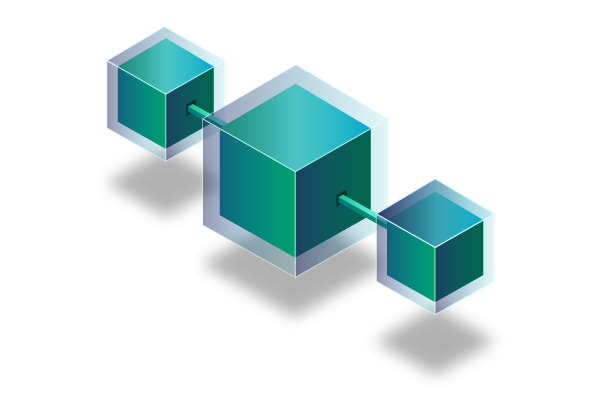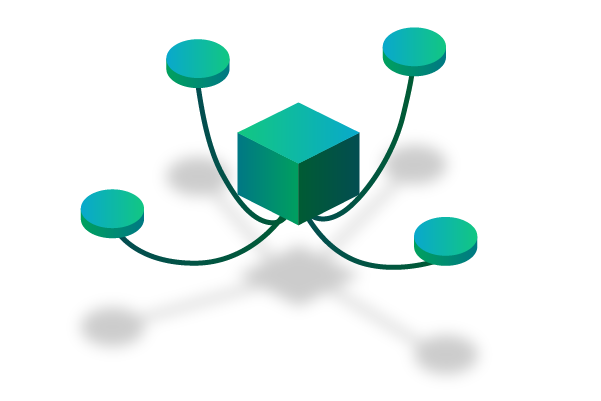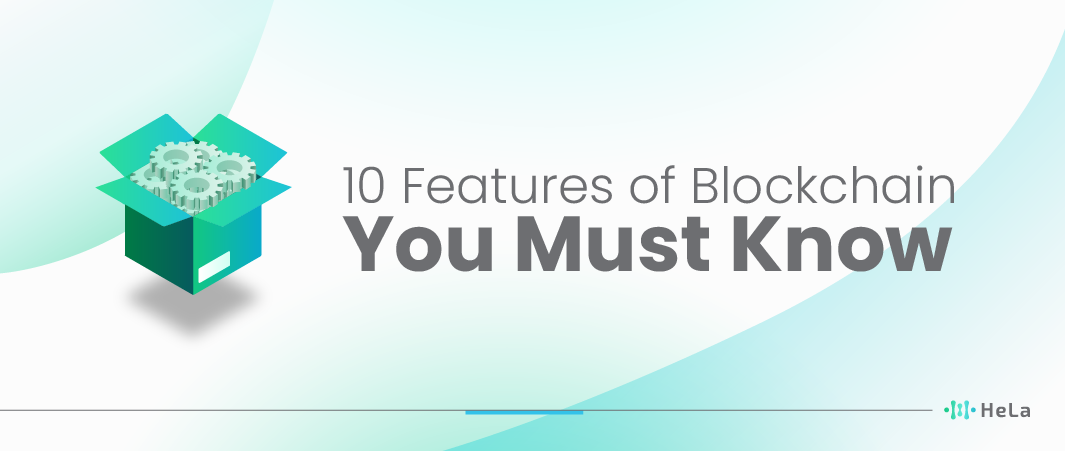Explore the world of blockchain technology and its transformative potential with our comprehensive guide to the “Top 10 Blockchain Features You Can’t Afford to Miss.” Blockchain, the distributed ledger technology that underpins cryptocurrencies like Bitcoin, has evolved far beyond its initial application.
Diving beyond the surface, the principles underpinning blockchain are deeply rooted in cryptography, decentralization, and the pursuit of transparency. It’s these tenets that provide the bedrock for a system that promises to revolutionize not just finance, but multiple industries, including healthcare, real estate, and supply chain management.
As we embark on this journey to understand the defining characteristics of blockchain, we invite readers to keep an open mind. While some of its features might seem complex, their amalgamation results in a technology that’s secure, transparent, and poised to shape the future.
What Is Blockchain?

Blockchain is a digital ledger technology where transactions are recorded in a series of blocks. Each block contains a set of transactions, a timestamp, a reference to the previous block (known as the previous block hash), and other related data. These blocks are connected sequentially, creating a chain of blocks, which is why it’s called a “blockchain.”
What makes blockchain particularly secure is its cryptographic foundation. Each block has a unique code called a hash, and any change in the information within the block will alter this hash. Because each subsequent block also contains the hash of the previous block, changing any block would require changing all subsequent blocks, which is computationally impractical when the blockchain is maintained by a large network.
The nature of blockchain means that once data is recorded, it is extremely difficult to alter, making it immutable. This characteristic, combined with the decentralized nature of most blockchain networks, provides a level of transparency and security that’s attractive for various applications, especially in areas that require trust, like financial transactions or supply chain verification.
Beyond Cryptocurrencies: The Evolution of Blockchain

Blockchain technology initially gained prominence as the backbone of cryptocurrencies like Bitcoin, but its journey has taken it far beyond digital coins. The features of blockchain have propelled it into a realm of diversified applications.
Starting with Bitcoin, blockchain’s primary use case was to enable secure and transparent peer-to-peer transactions without the need for intermediaries like banks. However, as its capabilities became more apparent, innovators began exploring its potential across various industries. The inherent features of blockchain, such as decentralization, immutability, and transparency, made it suitable for use in supply chain management, where tracking the origin and journey of products became more efficient and trustworthy.
Fast forward to the present day, and we see blockchain technology making inroads in fields as diverse as healthcare, real estate, and voting systems. Its ability to create tamper-proof records and streamline processes has led to the development of smart contracts, which automate complex agreements without the need for intermediaries. As the journey of blockchain continues, its features promise even greater possibilities beyond cryptocurrencies, shaping the future of industries worldwide.
Also Read: Blockchain Adoption: An In-Depth Review
The 10 Features of Blockchain

Blockchain technology is a revolutionary innovation that has gained widespread attention and adoption across various industries. It is primarily known for its application in cryptocurrencies like Bitcoin, but its potential extends far beyond digital currencies. Here are 10 key features and aspects of blockchain technology:
1. Decentralization: Power to the People
Decentralization is one of the key features of blockchain technology, and it’s all about giving power back to the people. Think about traditional systems like banks or regular databases – they have one central authority in charge. But with blockchain, it’s different. Instead of one big boss, it spreads control across a whole bunch of computers connected in a network. This means that no single person or company calls all the shots, making it more like a democratic system for managing data. Plus, it cuts down on the risks that come with putting too much power in one place.
Now, let’s dive a bit deeper into these features of blockchain. When we talk about decentralization, we’re talking about a system where nobody’s the big boss – it’s more like a team effort. Imagine it as a digital version of a neighborhood watch. Everyone in the network keeps an eye on things, making sure everything’s in order. So, when it comes to managing data or making decisions, it’s a collective effort, reducing the chances of one person or group abusing their power. It’s like a digital democracy that can help make things fairer and more secure for everyone involved.
2. Transparency: Seeing is Believing
A distinguishing characteristic of blockchain technology is its transparency. Imagine it as a digital ledger that’s open for everyone in the network to see. Whenever a transaction takes place, all the details are there for everyone to inspect, which builds trust among participants. But here’s the clever twist: even though transaction info is out in the open, the identities of the people involved are kept secret through encryption. This nifty combination of transparency and privacy is one of the key features of blockchain, making it a game-changer in various industries.
In essence, blockchain operates like a communal book where everyone can verify the entries, ensuring honesty and accountability. But, just like reading someone’s diary without knowing their name, the actual players remain anonymous. This balance between seeing the action and protecting identities is what gives blockchain its unique appeal in today’s digital world, fostering trust and security in an otherwise transparent environment.
3. Immutability: Set in Digital Stone
Blockchain’s immutability is a key feature that sets it apart. Once data is securely recorded on a blockchain, it becomes like an engraving in digital stone. This means that any attempt to alter the information would be extremely difficult, as it would require consensus from a majority of the network participants. This inherent feature of blockchain ensures the credibility and trustworthiness of each transaction, making it highly reliable for various applications.
In simple terms, the immutability feature of blockchain makes it almost impossible for anyone to tamper with the data once it’s on the chain. It’s like a digital notarization that guarantees the authenticity of transactions and records. This quality is especially valuable in scenarios where trust is paramount, such as financial transactions and supply chain management, as it provides a solid foundation for secure and transparent operations.
4. Security: Fort Knox in Digital Form
Blockchain technology offers a level of digital security akin to the legendary Fort Knox. How does it achieve this? Well, through clever cryptographic algorithms and some nifty features of blockchain. Each transaction on a blockchain is not only encrypted but also tightly linked to the one that came before it. This unbreakable chain of transactions makes it incredibly tough for any malicious actors to tamper with the data or commit fraud.
But wait, there’s more! The security of blockchain isn’t just about encryption. It’s also about being decentralized, which means there’s no single point of control vulnerable to attack. Instead, the network is spread across countless computers, making it a digital fortress against hacking attempts. So, in a world full of digital threats, blockchain’s robust security features are like having a high-tech Fort Knox safeguarding our transactions and data.
5. Consensus Algorithms: Collective Agreement
Consensus algorithms are like the secret sauce of blockchain, making sure everyone’s on the same page when it comes to transactions. They’re basically the features of blockchain that keep the system running smoothly. Think of it like this: in a big group chat, we need everyone to agree on something, and consensus algorithms are what help us achieve that agreement.
Two widely recognized consensus mechanisms include Proof of Work (PoW) and Proof of Stake (PoS). These are the methods that help decentralized decision-making happen. PoW involves solving complex puzzles to validate transactions, while PoS relies on participants holding and “staking” their cryptocurrency as collateral to verify transactions. These mechanisms make sure that when you send or receive cryptocurrency, it’s all legit and agreed upon by the whole blockchain community, ensuring the operational integrity of the system.
6. Pseudonymity: Secure Anonymity
Pseudonymity is one of the key features of blockchain technology. It allows users to engage in transactions and interactions without having to disclose their actual identities. Instead, they use pseudonyms or nicknames, safeguarding their personal information while still benefiting from the transparency and security that blockchain offers. This means that when you make a transaction on the blockchain, you don’t have to reveal your real name or personal details, making it a safer and more private way to conduct digital transactions.
Blockchain’s pseudonymity feature ensures a level of security and anonymity that traditional systems often can’t provide. It empowers users to participate in the digital world with greater confidence, knowing that their privacy is respected, while still enjoying the benefits of transparent and secure transactions facilitated by the blockchain.
7. Smart Contracts: Self-executing Agreements
Smart contracts are like digital agreements that run themselves. They kick into action when certain conditions we’ve set beforehand are met. These smart contracts are pretty cool because they can help us do business without relying on middlemen, like banks or lawyers. They’re one of the features of blockchain technology, which is like a secure digital ledger, and they make sure we can trust each other when we’re doing business online.
So, instead of needing someone to oversee and enforce an agreement, a smart contract does it automatically. This not only saves time but also cuts down on the chance of mistakes or dishonesty. It’s like having a trustworthy digital assistant that follows the rules you’ve agreed upon, all thanks to the features of blockchain. So, in a nutshell, smart contracts make online business dealings more efficient and secure.
8. Interoperability: Bridging the Chains
Blockchains are like pieces of a puzzle that can work together to create something even more powerful. They’re not separate islands; they can talk to each other, and this ability to communicate and share information is a game-changer in the world of blockchain technology. Think of it as connecting different features of blockchain systems, much like different apps on your phone working together. This interoperability not only makes the blockchain ecosystem more versatile but also supercharges its usefulness.
Imagine you have different types of cryptocurrency in your digital wallet, each on its own blockchain. Thanks to interoperability, these blockchains can seamlessly exchange data and assets. This means you can easily trade, swap, or use these different cryptocurrencies without the hassle of going through complicated conversions. In essence, interoperability is the bridge that brings these different features of blockchain together, making the entire system more efficient and user-friendly. It’s like making sure all the apps on your phone can seamlessly share information and work together, making your digital experience smoother and more enjoyable.
9. Provenance: Tracking the Journey
Blockchain technology offers a powerful tool for keeping tabs on an asset’s history and source, making it easier to confirm authenticity and thwart fraudulent activities. One of the standout features of blockchain is its transparent ledger system, which acts as a digital record of transactions. This ledger, spread across a network of computers, allows anyone involved in the asset’s journey to access and verify information. This means that in sectors like supply chain management, businesses can meticulously trace the path of products from their creation to the moment they reach consumers.
Imagine a scenario where a consumer wants to know if the organic apples they bought were indeed grown without harmful pesticides. With the features of blockchain, they can simply scan a QR code on the product’s packaging and access a treasure trove of information. They can see when and where the apples were harvested, the transportation routes they took, and even the certifications they received along the way. This transparency not only builds trust but also acts as a robust defense against counterfeit goods and dishonest actors. Blockchain’s role in tracking the journey of assets is a game-changer, ensuring that the products we use and consume are what they claim to be.
10. Finality: Irreversible Transactions
In the world of blockchain, transactions have a unique quality known as “finality.” Unlike in traditional systems where transactions can sometimes be reversed or disputed, once a transaction gets confirmed on a blockchain, it’s set in stone. This is one of the fundamental features of blockchain technology, and it plays a crucial role in building trust within the system while completely eliminating the risks associated with chargebacks.
Picture it like this: when you send someone digital assets on a blockchain, it’s akin to handing them physical cash. Once it’s in their hands, there’s no turning back. This feature of blockchain, where transactions are absolutely irreversible, acts as a powerful security measure and a game-changer in industries that rely on trust and transparency, like finance and supply chain management. So, when it comes to understanding the benefits of blockchain, this concept of finality is right up there with the most important features of this transformative technology.
Also Read: What Are Sidechains? Revolutionizing Blockchain Scalability
Conclusion
As we navigate the digital era, the features of blockchain offer a promising beacon. They showcase a future where trust is inherent, not enforced; where power is distributed, not monopolized; and where transparency and privacy coexist harmoniously.
The beauty of blockchain lies not just in its individual features but in how they come together to form a robust, decentralized system. As industries across the globe recognize and adapt to its potential, the influence of blockchain will only grow.
While we’ve just scratched the surface with these ten features, it’s evident that blockchain is more than a fleeting trend. It’s a revolutionary technology that promises to redefine our understanding of data, value, and trust in the coming decades.
Disclaimer: The information provided by HeLa Labs in this article is intended for general informational purposes and does not reflect the company’s opinion. It is not intended as investment advice or recommendations. Readers are strongly advised to conduct their own thorough research and consult with a qualified financial advisor before making any financial decisions.

Joshua Soriano
I am a writer specializing in decentralized systems, digital assets, and Web3 innovation. I develop research-driven explainers, case studies, and thought leadership that connect blockchain infrastructure, smart contract design, and tokenization models to real-world outcomes.
My work focuses on translating complex technical concepts into clear, actionable narratives for builders, businesses, and investors, highlighting transparency, security, and operational efficiency. Each piece blends primary-source research, protocol documentation, and practitioner insights to surface what matters for adoption and risk reduction, helping teams make informed decisions with precise, accessible content.
- Joshua Soriano#molongui-disabled-link
- Joshua Soriano#molongui-disabled-link
- Joshua Soriano#molongui-disabled-link
- Joshua Soriano#molongui-disabled-link

